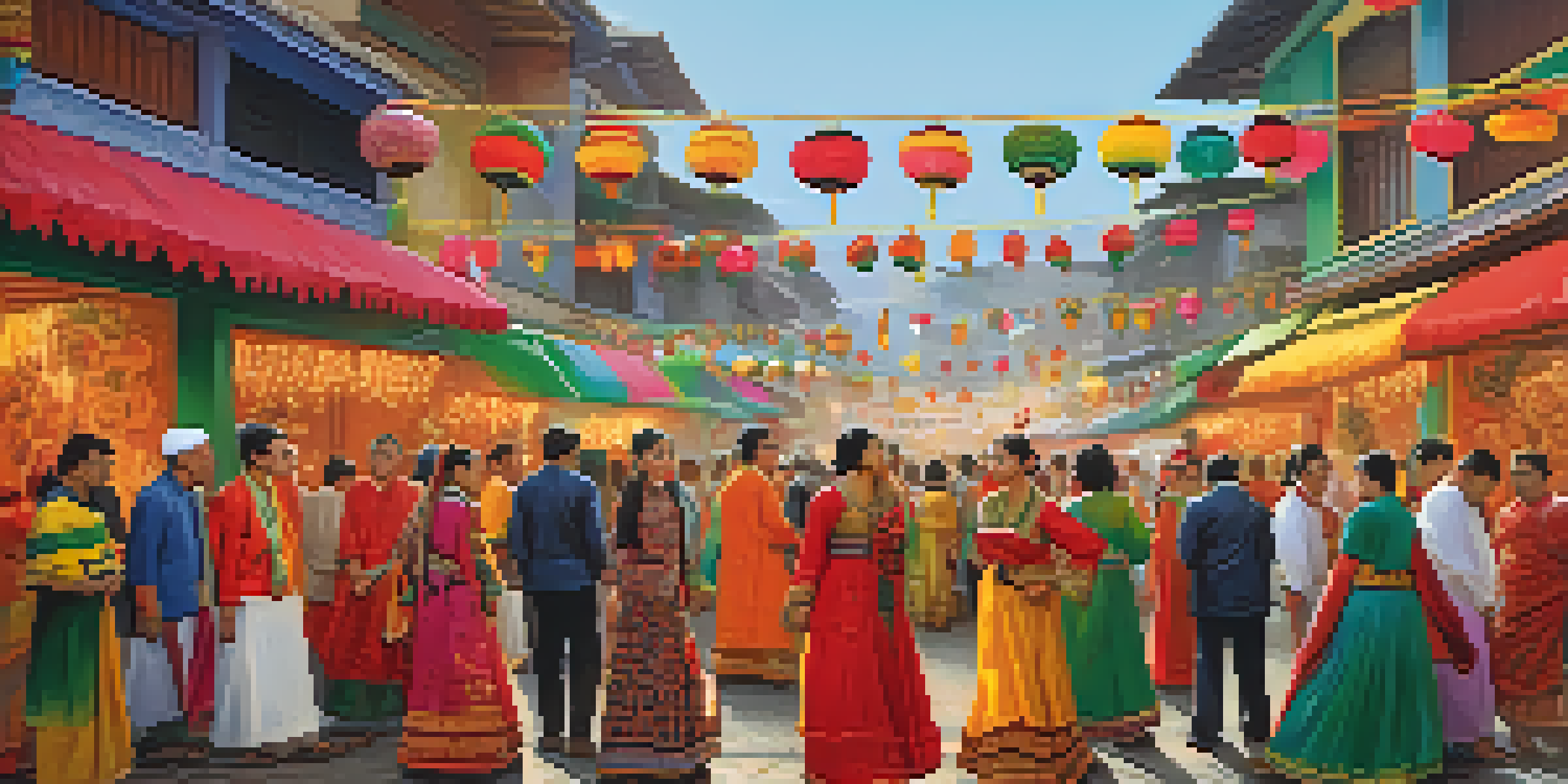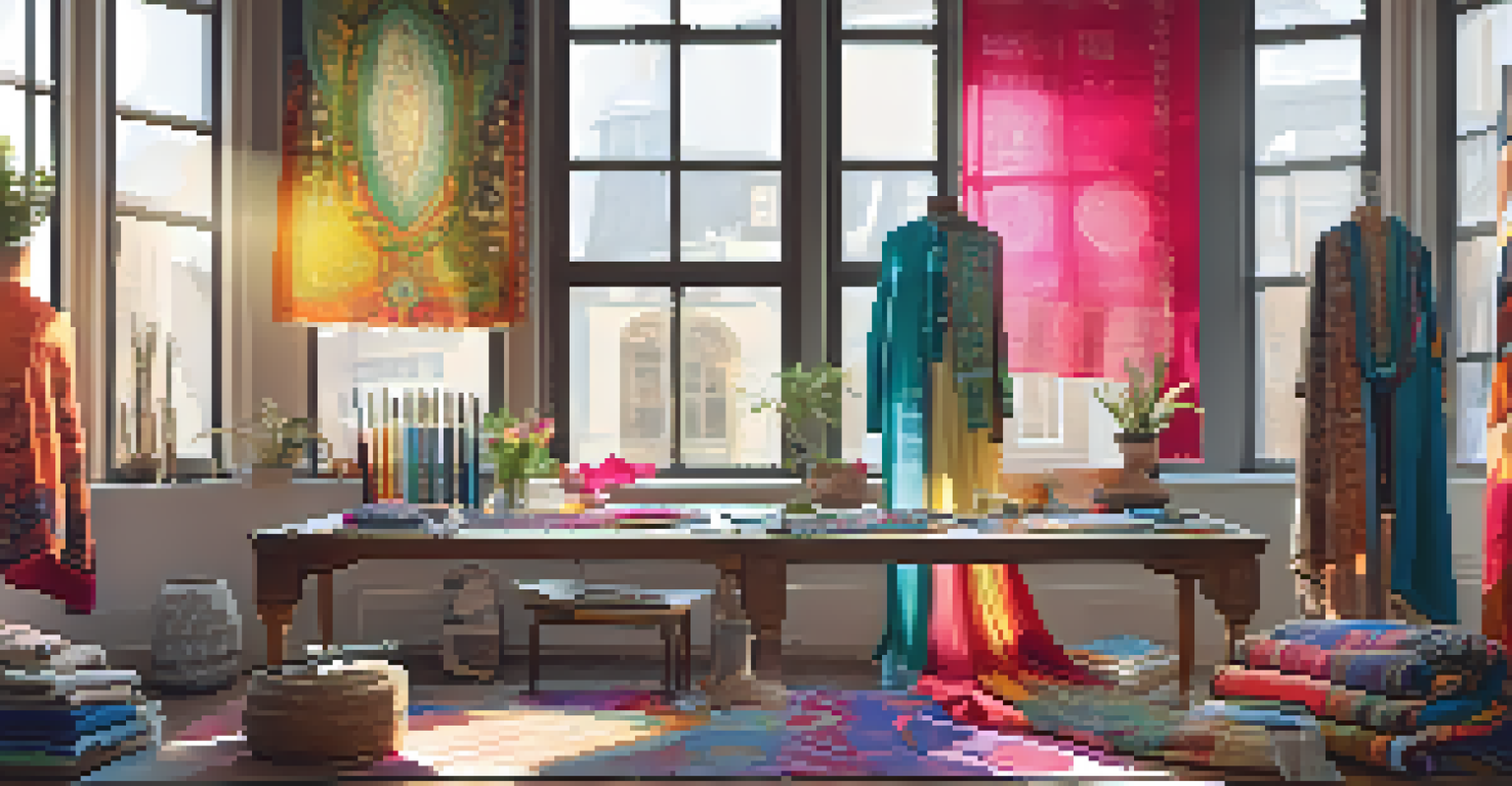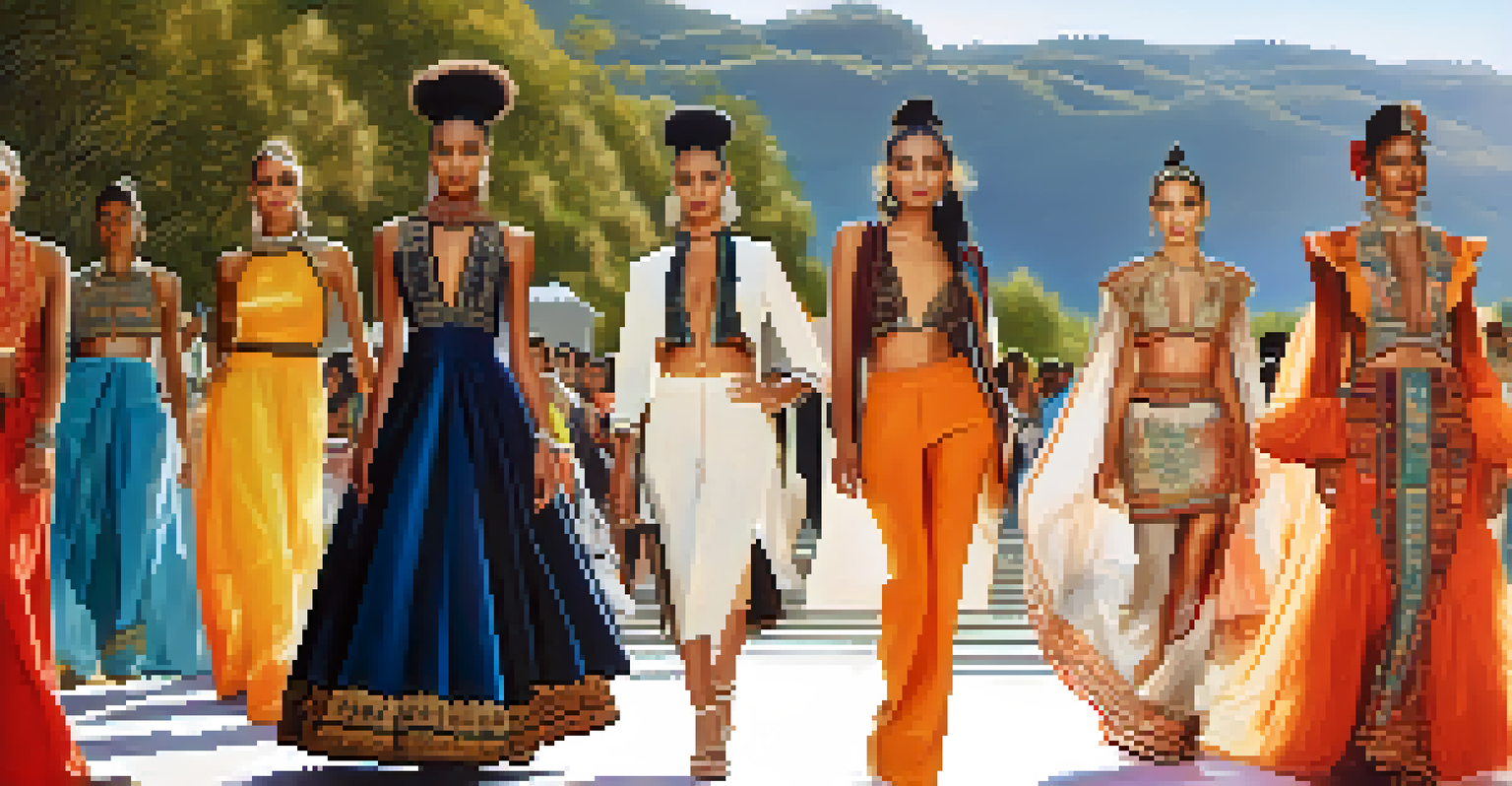Cultural Identity Narratives in Contemporary Fashion Trends

Understanding Cultural Identity in Fashion
Cultural identity is the unique blend of beliefs, traditions, and values that shape who we are. In fashion, it serves as a canvas where individuals express their heritage and personal stories. This interplay between identity and style creates vibrant narratives that resonate with many, often reflecting the wearer's background.
Fashion is the armor to survive the reality of everyday life.
For instance, traditional garments like the kimono or the sari are not merely clothing; they tell stories of culture and history. When designers incorporate these elements into modern fashion, they bridge the gap between past and present, making cultural identity more visible and celebrated. The result is a dynamic fusion of styles that captivates a global audience.
Moreover, as global connectivity increases, so does the influence of diverse cultures on fashion. Designers are now more inspired by global aesthetics, leading to a richer tapestry of fashion that honors various cultural narratives while encouraging dialogue about identity.
The Role of Social Media in Fashion Narratives
Social media has revolutionized how we perceive and share fashion narratives. Platforms like Instagram and TikTok allow designers and consumers to showcase cultural-inspired styles instantly, creating a vibrant community around shared interests. This democratization of fashion means that diverse voices can be heard and celebrated.

Consider how influencers from various backgrounds use their platforms to highlight traditional attire alongside contemporary pieces. These posts not only promote cultural appreciation but also educate audiences about the significance behind certain styles. As a result, cultural narratives in fashion gain visibility and can inspire others to explore their own identities.
Cultural Identity Shapes Fashion
Fashion serves as a canvas for individuals to express their cultural identity, blending heritage and personal stories into vibrant narratives.
Additionally, social media trends often challenge traditional beauty standards, inviting a broader acceptance of diverse cultural expressions. This shift not only enriches the fashion landscape but also empowers individuals to embrace their own cultural narratives, fostering a sense of pride and belonging.
Sustainable Fashion and Cultural Heritage
Sustainable fashion is gaining traction as consumers become more aware of environmental impacts. This movement often intersects with cultural identity, as many indigenous practices emphasize sustainability and respect for nature. By integrating these values into contemporary fashion, we can honor cultural heritage while promoting eco-friendly practices.
Clothes mean nothing until someone lives in them.
For instance, brands that source materials locally from indigenous communities not only provide economic support but also preserve traditional techniques. This collaboration ensures that cultural narratives are woven into the fabric of modern fashion, making sustainability a shared story rather than a trend.
Moreover, as consumers seek unique and authentic pieces, the demand for sustainable fashion rooted in cultural identity continues to grow. This shift encourages designers to be more mindful about their choices, resulting in collections that celebrate both the environment and cultural legacies.
Fashion Weeks: A Platform for Cultural Expression
Fashion Weeks around the world have become significant platforms for showcasing cultural narratives. Designers use these events to highlight their cultural roots, creating collections that speak to their identities. These presentations not only celebrate diversity but also challenge the conventional standards of beauty and style.
Take, for example, the recent showcasing of African-inspired designs in major fashion weeks. Such presentations not only introduce audiences to rich cultural histories but also encourage a broader discussion about representation in the fashion industry. This visibility allows emerging designers from diverse backgrounds to gain recognition, paving the way for future talents.
Social Media Amplifies Cultural Voices
Platforms like Instagram and TikTok democratize fashion, allowing diverse cultural narratives to gain visibility and foster community engagement.
By embracing cultural themes, Fashion Weeks can foster inclusivity and understanding. They have the power to reshape perceptions and highlight the importance of cultural narratives, reminding us that fashion is not just about clothing but a medium of storytelling.
The Influence of Cultural Festivals on Fashion Trends
Cultural festivals are colorful celebrations that often inspire fashion trends. Events like Diwali, Carnaval, and the Chinese New Year showcase traditional attire that influences mainstream fashion. Designers frequently draw inspiration from these festivals, infusing their collections with vibrant colors, patterns, and cultural motifs.
For instance, the intricate designs of henna often find their way onto fabric, while the bold colors of Carnaval can inspire lively prints. These influences create a dialogue between tradition and contemporary style, allowing fashion to evolve while respecting its roots. As a result, cultural festivals become a source of inspiration for both designers and fashion enthusiasts alike.
Moreover, as these festivals gain global attention, the resulting fashion trends promote cultural appreciation. They encourage individuals to explore and celebrate diverse cultural identities, fostering a sense of community and understanding in a globalized world.
Challenges of Cultural Appropriation in Fashion
While cultural exchange can enrich fashion, it also raises concerns about cultural appropriation. This occurs when elements of a culture are borrowed without understanding or respecting their significance. In fashion, this can lead to the commercialization of sacred symbols, often resulting in backlash from the communities they originate from.
For example, wearing a Native American headdress as a fashion statement can trivialize its cultural importance. These instances highlight the need for sensitivity and awareness in fashion design, reminding us that cultural elements should be celebrated with respect and acknowledgment. The conversation around appropriation encourages designers to engage with cultures authentically.
Sustainability Meets Cultural Heritage
The movement toward sustainable fashion often aligns with cultural practices that emphasize respect for nature, honoring heritage while promoting eco-friendly practices.
To combat this issue, brands are increasingly collaborating with cultural representatives when incorporating traditional elements into their designs. This practice not only fosters respectful representation but also allows for the preservation of cultural narratives in a manner that honors their origins.
The Future of Cultural Identity in Fashion
As we look ahead, the future of cultural identity in fashion appears promising. With a growing emphasis on inclusivity, diversity, and sustainability, designers are becoming more conscious of the stories they tell through their collections. This shift encourages a broader acceptance of various cultural narratives and expressions in the fashion landscape.
The rise of technology, such as virtual reality and augmented reality, also offers new ways to explore cultural fashion. Imagine experiencing a virtual fashion show that immerses viewers in the cultural themes behind the designs. This innovative approach can deepen appreciation and understanding for diverse cultural identities.

Ultimately, the future of fashion lies in its ability to adapt and evolve while respecting cultural narratives. By embracing these stories, the fashion industry can foster a more inclusive environment, where everyone feels represented and valued, ensuring that cultural identity remains at the heart of fashion.